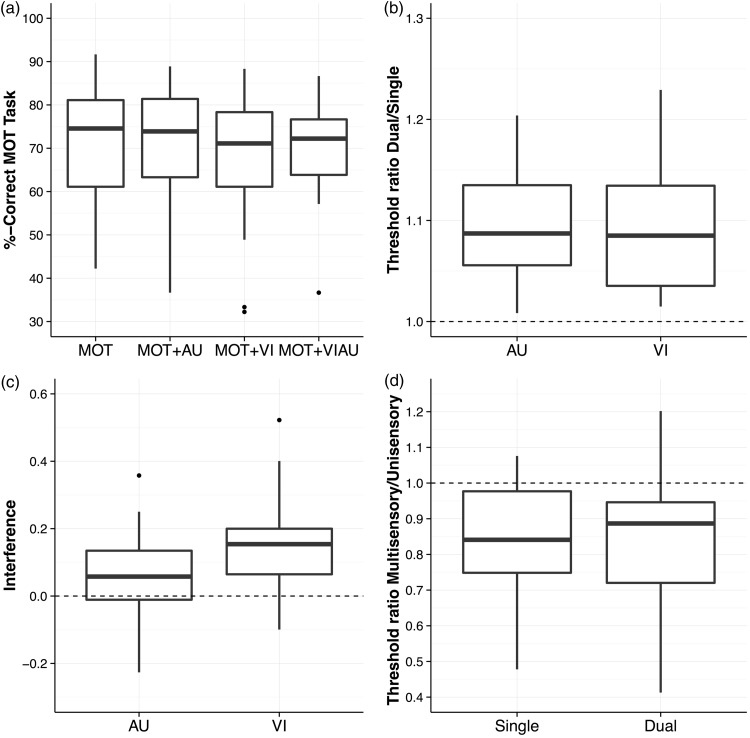Figure 2.
Results overview. (a) Multiple object tracking performance (i.e., fraction correct of target selections) as a function of single task (multiple object tracking) and dual task conditions (MOT+AU, MOT+VI, and MOT+VIAU). (b) Detection task ratios (i.e., threshold in the single task condition divided by the threshold in the dual task condition—values larger than 1 indicate that the multiple object tracking task interfered with the detection task) as a function of detection task conditions (AU and VI). (c) Interference between the multiple object tracking and detection task. For the interference, we first calculated performance ratios for the multiple object tracking performance by dividing the single task condition performance (MOT) separately by each of the dual task conditions (MOT+VI and MOT+AU). A value above 1 indicates that the detection task interfered with performance in the MOT. To have a measure of the overall interference between tasks, we calculated the differences from 1 for the detection task and MOT task ratios and added these differences, separately for each participant and condition. (d) Multisensory detection task ratio (i.e., thresholds in the audiovisual detection task are divided by the unisensory detection task thresholds (VI and AU)). A value below 1 indicates that participants’ perceptual sensitivities to detect stimuli benefits from receiving stimuli from two sensory modalities (i.e., vision and audition) compared with one sensory modality (either vision or audition). Box plots are shown in all panels (1.5 of the interquartile range is used for the whiskers).

